Imagine yourself driving and suddenly, you feel a strange sensation, a loss of stability, or an unusual noise: it's a puncture. Runflat tyres allow you to continue driving without stress or interruption, even in the event of a puncture.
What is a Run Flat tyre?
Runflat tyres are designed to remain functional even after a puncture. They allow you to drive at a maximum speed of 80 km/h for about 80 kilometres. This type of tyre, with reinforced sidewalls, supports and steers the vehicle despite the loss of pressure.
Runflat tyres have been perfected over the past few decades and are now available for a wide range of vehicles. Many car manufacturers equip their new models with these tyres to maximise safety and comfort. No need for a spare wheel with Runflat tyres.
Depending on the manufacturers, the term "run flat" varies: ZP at Michelin, RFT and EXT at Bridgestone, HRS at Hankook, DSST at Dunlop, SSR at Continental... On our site, you can find runflat tyres by selecting the "RUN FLAT" option during your search.
Why choose Runflat tyres?
One of the main advantages of Runflat tyres lies in the safety they provide. In the event of a loss of pressure, the risks of losing control of the vehicle are significantly reduced, as the tyre is able to maintain its shape and thus preserve proper road handling. Moreover, this eliminates the discomfort and sometimes the danger associated with changing a tyre on the side of a road.
Keep in mind that even though Runflat tyres allow you to continue driving a certain distance after a puncture, they are not indestructible. They must be repaired or replaced as soon as possible.
How to recognise a Runflat tyre?
Runflat tyre manufacturers have adopted specific marking methods that allow these tyres to be identified at a glance. On the sidewall of each Runflat tyre, you will find a series of specific letters or symbols. For example, you might see the indications "Run Flat" or "RF" that the vast majority of manufacturers place on their sidewalls.
Some manufacturers, to differentiate themselves, choose to use customised markings for their run-flat tyres. This is why there are different names. Here are some of them:
- ZP (Zero Pressure) at Michelin
- SSR (Self Supporting Runflat) at Continental
- EMT (Extended Mobility Tire) or ROF (RunOnFlat) at Goodyear
- DSST (Dunlop Self-supporting Technology) at Dunlop
- HRS (Hankook Runflat System) at Hankook
- MOE (Mercedes RunOnFlat Extended) at Mercedes
- RFT (Run-Flat Tire) at Bridgestone/Firestone
Which Run Flat tyres to buy?
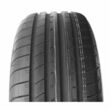
Learn more
Learn more
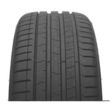
Learn more
Learn more

Learn more
Learn more
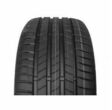
Learn more
Learn more
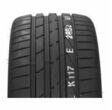
Learn more
Learn more
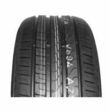
Learn more
Learn more
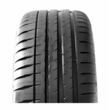
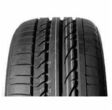
Learn more
Learn more

Learn more
Learn more

Learn more
Learn more
The most sought-after runflat tyre sizes:
How to know if a rim is Runflat compatible?
First clue, if your vehicle was equipped with Runflat tyres at purchase, it is almost certain that your rims are already compatible. Otherwise, the best solution is to consult the manufacturer's specifications.
Runflat tyres require specially designed rims (H2 profile (Hump 2)) that can support the reinforced structure of the tyres and allow them to function properly in the event of a puncture.
The H2 profile is particularly suitable for Runflat tyres as it prevents the tyre from coming off the rim when the pressure is low, thus providing additional safety.
This allows drivers to continue driving a certain distance (usually between 50 and 80 km) at a reduced speed to reach a safe place or a repair shop.
Fitting Runflat tyres on non-compatible rims can present significant risks. Indeed, in the event of a loss of pressure, the tyre can come off the rim and lead to a loss of control of the vehicle.
What pressure for Runflat tyres?
The recommended pressure for Runflat tyres is specified by the vehicle manufacturer and is generally the same as that recommended for standard tyres.
It is advisable to regularly check the pressure of your tyres. Under-inflated tyres can affect the vehicle's handling and increase fuel consumption, while over-inflated tyres may compromise grip.
Most vehicles equipped with Runflat tyres have a pressure monitoring system. The TPMS (Tire Pressure Monitoring System) alerts you when a tyre's pressure is significantly low, which is particularly useful for Runflat tyres that may not show obvious signs of pressure loss.
In addition to pressure, regularly inspect your Runflat tyres for any signs of uneven wear, damage, or punctures.
Run Flat tyres FAQ:
Are Runflat tyres repairable?
If the puncture is small and located on the tread, a repair may be considered. However, if the sidewalls are damaged, the tyre must be replaced.
Are Run Flat tyres noisy?
No, run flat tyres do not make more noise than standard tyres.
Do Runflat tyres consume more fuel?
No, run flat tyres do not affect fuel consumption compared to standard tyres.
Are Run Flat tyres less comfortable?
Runflat tyres have stiffer sidewalls, which can make the ride firmer compared to standard tyres. The loss of comfort remains theoretical, as in real conditions, it is almost impossible to tell the difference.
Are Run Flat tyres more difficult to fit?
Yes, not all our partner fitting centres are equipped to fit run flat tyres. The tyre's sidewall is reinforced, which causes additional stress on the fitting machines. You will need to go to a suitable partner centre. We clearly indicate this on the pages dedicated to fitting stations.
Are Run Flat tyres heavier?
Yes, they weigh between 10% and 15% more than a standard tyre.
Are Runflat tyres more expensive?
Their purchase price is generally 20 to 25% higher than that of conventional models. Their fitting is also more expensive.
Can I replace my Runflat tyres with "standard" tyres?
Yes, it is possible to make this change. However, you will need to provide a puncture prevention device.
Can you mix Runflat tyres and standard tyres on the same vehicle?
It is forbidden to mix Runflat tyres with standard tyres.






